Pawar to the People: AQR CTO Neal Pawar
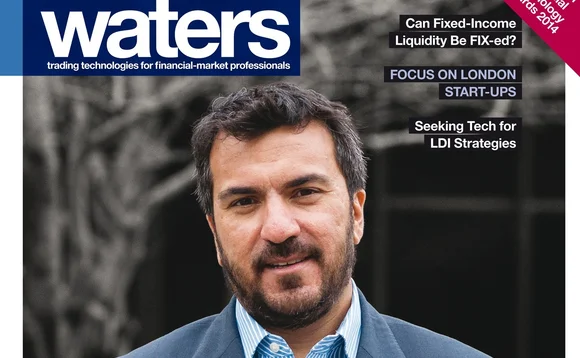
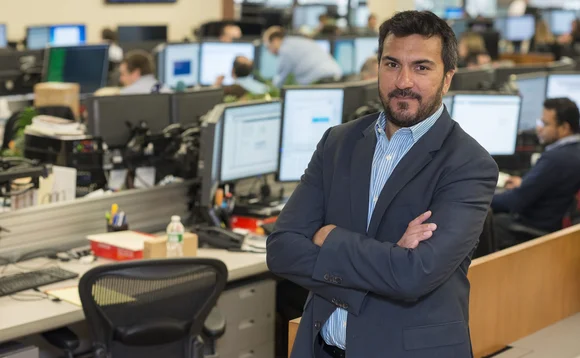
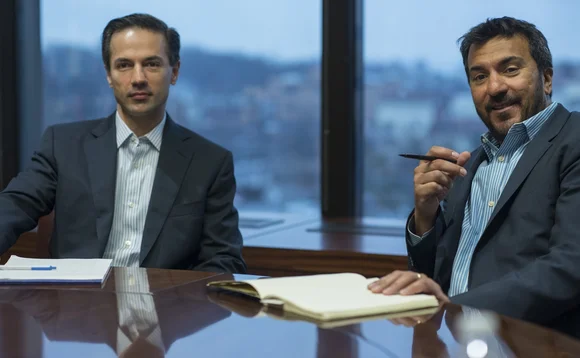
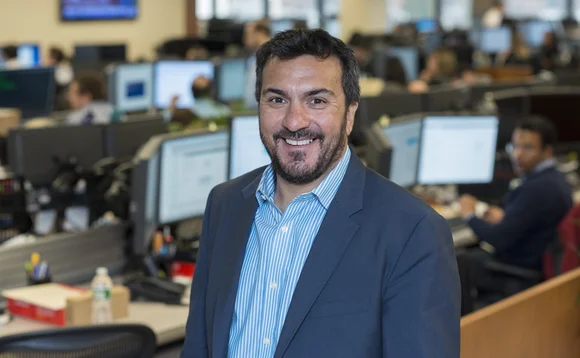
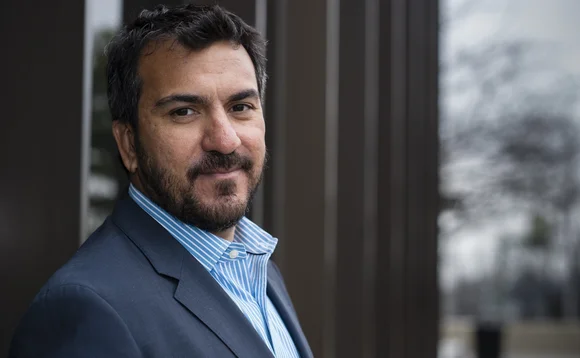
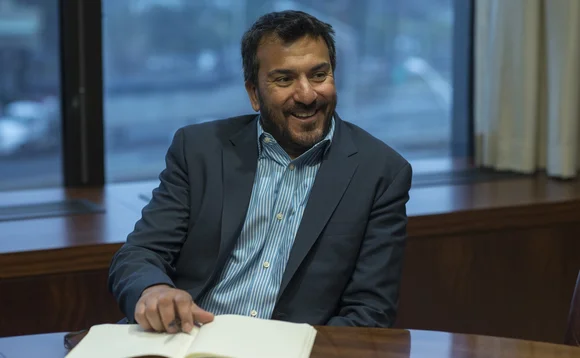
One of Neal Pawar’s greatest strengths as a technologist is his ability to relate to those he’s developing for.
Pawar toured India as part of an acting troupe performing a play about racism in South Africa at the age of 17, and played the teenage version of Jawaharlal Nehru, India’s first prime minister, in a Bollywood film. Drawing on those skills allows Pawar to get into the mindset of a 30-something quantitative analyst who will use a platform he develops.
And while there might not be much overlap between the computer lab and the drama club, Pawar, CTO at investment management firm Applied Quantitative Research (AQR) Capital Management, finds that the two complement each other. The principles behind understanding how to play a certain role are very similar to those that are inherent in the ability to program.
“The empathy of being able to put yourself in the shoes of someone else when they’re using software helps you write it better,” Pawar says. “I look back on the theater exposure as a formative experience that helped me develop into who I am today.”
The confidence that allowed Pawar to perform in front of crowds as large as 1,000 people as a teenager still comes through in his voice today. Pawar is engaging throughout the conversation that spans everything from his vision for AQR to the prospects of his beloved Liverpool Football Club. It’s easy to see why former colleagues are quick to mention his people skills in the same breath as his technological ability.
“In computer science, in general, you see all sorts, and there are people who are perhaps more introverted. Being able to empathize with them really helps as a manager to understand what motivates people and what they’re looking for to grow their careers.” Neal Pawar, AQR
“If I were to pick out a trait that distinguished Neal from his peers, it would be his personality,” says Ray Gaffield, an executive director of IT at UBS, and a former colleague of Pawar’s. “He was always able to draw people together, for professional or private reasons. People are always willing to listen to him. He’s got a good user interface.”
Pawar credits a lot of that to his time on stage. Once you’ve learned how to act like different people, connecting with them doesn’t seem nearly as hard. As for the role his theater background plays in his career, Pawar says that he’s better able to relate to individuals. “To be able to communicate and explain things and speak to people—I just found it to be an awesome addition,” he says.
Unique Combo
But what draws someone to both C++ and Shakespeare? How does one connect the dots between HTML and Oscar Wilde?
Pawar’s passion for technology came early, spurred by summer trips from Mumbai to visit his mother’s family in England, where he was raised until he was eight. It was there that he marveled at new technology not yet available in India.
By the time he was 10, he asked for a Sinclair ZX Spectrum. Although unsure of what to think of his request, he’s parents still decided to buy him the 8-bit PC.
Unlike many at the time, the youngster wasn’t intrigued by the video games the system offered. Programming, albeit less glamorous, was what really grabbed his attention. Within a year, Pawar had built an airline database of sorts by writing code on the flights between Mumbai and London.
“I didn’t realize it at the time, but it was the beginning of what I would be doing over the course of my career,” Pawar says.
At the prestigious Cathedral and John Connon School in India, Pawar built the first computer lab, actually interviewing the school’s teachers to find the best fit to run the lab. The school eventually set up a computer science subject that mirrored the curriculum offered in the UK, all thanks in large part to Pawar’s passion.
It was there that Pawar also developed a love of theater, performing in plays throughout his time at school. Eventually, he was spotted by a director and nabbed a role in the play “Master Harold”... and the Boys and the Bollywood movie Nehru: The Jewel of India.
Nehru didn’t excel at the box office. “It was one of the few Indian movies made at the time that wasn’t a musical, and it flopped,” Pawar says. But he enjoyed the experience of being in front of the cameras. Learning how to relate to different characters he was playing would prove to be just as useful as the time spent with his ZX Spectrum. Both gave Pawar valuable experience he would tap into years later.
“In computer science, in general, you see all sorts, and there are people who are perhaps more introverted. Being able to empathize with them really helps as a manager to understand what motivates people and what they’re looking for to grow their careers,” Pawar says.
Pawar finished at the Cathedral and John Connon School as head boy in his final year and headed off to college in the US. Looking to continue to grow in both his passions, Pawar chose Brown University, where he was able to double major in computer science and theater.
The idea that someone would major in both was a difficult concept for some of the faculty at Brown to grasp. Pawar recalls his first academic advisor, who hailed from the theater department, asking him what exactly he was doing when he showed him his planned course load for the following semester.
Still, Pawar pressed on, splitting time between Othello and Pascal. And although the commitments to both subjects eventually became too much, forcing Pawar to drop the theater major, he continued to take classes in the subject throughout his time at Brown.
“I think there was a certain amount of realism,” says Pawar of his ultimate choice of computer science over theater. “When you come in as an international student to the US, you graduate and you need to find a job. Hmmm, let’s see: computer science or acting?”
Still Learning
After graduating from Brown, Pawar got a job as a programmer at O’Connor and Associates, a small options trading shop. The experience was a continuation of Pawar’s education with one major difference: Missed deadlines on code meant a delayed project and unhappy customers as opposed to a point deduction on a final project.
While it might seem like an obvious lesson, it’s one that’s stuck with Pawar throughout his career. Even now, years later, Pawar stresses to his employees at AQR that everything currently live and being used by customers has to continue to operate and work.
It was a concept hammered into Pawar early on at O’Connor. He still remembers the feeling of terror and excitement he’d get upon hearing his phone ring after submitting code, knowing it was most likely Gaffield, his manager, asking if Pawar could stop by his office. Pawar knew the call likely meant he had entered subpar code, but it was also an opportunity to understand what he could do right next time.
“You don’t come out of college ready. There is still more you need to learn,” Pawar says. “The practical application of software is such a different thing from the sort of theoretical application of it. I’m a big fan of your first three to five years really being more of an apprenticeship. I got that at O’Connor, and I’m very grateful for it. We continue to foster that sort of environment at AQR today.”
Pawar thrived on the feedback he got while at the small firm from superiors like Gaffield and Pat O’Donnell, who would eventually become CIO at UBS. But after a series of mergers, O’Connor was absorbed by UBS. What at one time was a firm with less than 1,000 employees had turned into one that now had nearly 100,000.
Time to Grow
Unhappy in middle management at a massive firm with little involvement in actual technology, Pawar spent a year at vendor Trading Edge, which would eventually become MarketAxess, before joining D.E. Shaw in the fall of 2000.
During his 10 years there, Shaw grew from managing just shy of $1 billion in assets to $45 billion at its peak. What started as a small quantitative shop that had fewer than 100 employees and specific investment strategies continued to diversify its offering during Pawar’s time there, requiring him to learn how to properly develop the firm without creating a tangled infrastructure.
“When we grew the firm, we were very strict about not allowing that to happen. So if that meant that we had to delay the launch a little bit so we had the right tools and the right front-to-back flow in place, we got that support,” Pawar says. “The platform they have today, frankly, has scaled in that way without becoming this really complex, convoluted, copy-and-paste–type environment.”
Pawar would eventually return to the world of big banks, albeit briefly, spending just under three years at UBS as the firm’s CIO of wealth management in Switzerland. While excited to be in charge of a massive technology budget, Pawar and his family eventually grew tired of being away from what they considered their home in Brooklyn. When the opportunity arose to take the CTO position at AQR in March of 2014, Pawar took it.
Yearn to Learn
Since joining AQR, two things have resonated with Pawar that speak volumes about the firm. First, Pawar was amazed at seemingly every employee yearning to have the resources to consume and compute as much data as possible. Despite holding $114.7 billion under management, there is a general drive among all employees to mature even more.
It’s something Pawar says he truly enjoys about his new job, and also one of the reasons why AQR was attracted to him.
Oktay Kurbanov, a principal at AQR who oversees the global asset allocation and global stock selection portfolio management and development teams, and who was one of the many employees who interviewed Pawar during the application process, says Pawar’s experience growing Shaw was exactly what AQR was looking for in its new CTO.
“We are rapidly growing and we need someone to push things forward and have strategic vision to implement new initiatives and innovations,” says Kurbanov, who was one of the first 14 employees at AQR’s founding in 1998. “We need to have talented people to manage the complexities and make sure that we can grow in a scalable, robust way.”
Secondly, Pawar was amazed by the firm’s transparency. AQR routinely open-sources its datasets. In 2008, the firm open-sourced Pandas, a Python package that provides flexible data structures and tools to do quantitative and financial research.
The concept, according to Kurbanov, who managed the team that developed Pandas, was to get other developers to contribute to the package to improve upon it and bring recognition to AQR as a company that is open to developers.
“This is a firm that writes academic papers about its strategies,” Pawar says. “You look at our industry in general, and you see it more as a closed industry. There is a lot of secret sauce. We’re writing papers about our secret sauce.”
Both these concepts point to a firm that is steeped in learning. Many employees hold doctorates. The Greenwich, Conn., office even includes a full lecture hall.
That type of philosophy is what Pawar and Oktay are pushing as a differentiator when they visit campuses to recruit new programmers. Much like Pawar’s first job at O’Connor, the goal is to couple new talent coming in with someone more experienced to serve as a mentor.
“I think we strive to create that type of environment here, where we really think of software as a craft. Like any craft, you have to spend time being an apprentice before you can consider yourself a bona fide craftsperson in that space,” Pawar says.
It’s a relationship not unlike that of an understudy and the lead of a play. “I should have thought of that one,” says Pawar, laughing. “That’s a good analogy.”
Neal Pawar Fundamental Data
Name: Neal Pawar
Birthplace: Newport Pagnell, England
Age: 43
Title: CTO, AQR Capital Management
AQR Assets Under Management: $114.7 billion
Education: BS in computer science from Brown University
Hobbies: Sound engineering, mountain biking
Biggest Professional Achievement: Creating environments that foster a collaborated spirit.
Biggest Professional Failure: Not vocalizing career aspirations early in his career.
Oktay Kurbanov, principal at AQR, on interviewing Pawar: “With Neal, what struck me was the breadth of his experience, and, at the same time, the warmth and the sincerity of the discussion. The openness was refreshing versus what I usually hear during interviews, and I liked that.”
Only users who have a paid subscription or are part of a corporate subscription are able to print or copy content.
To access these options, along with all other subscription benefits, please contact info@waterstechnology.com or view our subscription options here: https://subscriptions.waterstechnology.com/subscribe
You are currently unable to print this content. Please contact info@waterstechnology.com to find out more.
You are currently unable to copy this content. Please contact info@waterstechnology.com to find out more.
Copyright Infopro Digital Limited. All rights reserved.
As outlined in our terms and conditions, https://www.infopro-digital.com/terms-and-conditions/subscriptions/ (point 2.4), printing is limited to a single copy.
If you would like to purchase additional rights please email info@waterstechnology.com
Copyright Infopro Digital Limited. All rights reserved.
You may share this content using our article tools. As outlined in our terms and conditions, https://www.infopro-digital.com/terms-and-conditions/subscriptions/ (clause 2.4), an Authorised User may only make one copy of the materials for their own personal use. You must also comply with the restrictions in clause 2.5.
If you would like to purchase additional rights please email info@waterstechnology.com
More on Emerging Technologies
As trading firms embrace AI, so do hackers
According to a Google cybersecurity report, cybercriminals are turning to AI to sharpen their attacks.
AI & data enablement: A looming reality or pipe dream?
Waters Wrap: The promise of AI and agents is massive, and real-world success stories are trickling out. But Anthony notes that firms still need to be hyper-focused on getting the data foundation correct before adding layers.
Waters Wavelength Ep. 343: Broadridge’s Jason Birmingham
This week, Jason Birmingham of Broadridge talks with Tony about the importance of fundamentals as technology rapidly evolves.
Data standardization is the ‘trust accelerator’ for broader AI adoption
In this guest column, data product managers at Fitch Solutions explain AI’s impact on credit and investment risk management.
BNY inks AI deal with Google, Broadridge moves proxy voting to AWS, Expero delivers ICE market data, and more
The Waters Cooler: TSX Venture Exchange data hits the blockchain, SmartTrade acquires Kace, and garage doors link to cloud costs in this week’s news roundup.
Everyone wants to tokenize the assets. What about the data?
The IMD Wrap: With exchanges moving market data on-chain, Wei-Shen believes there’s a need to standardize licensing agreements.
Google, CME say they’ve proved cloud can support HFT—now what?
After demonstrating in September that ultra-low-latency trading can be facilitated in the cloud, the exchange and tech giant are hoping to see barriers to entry come down.
Waters Wavelength Ep. 342: LexisNexis Risk Solutions’ Sophie Lagouanelle
This week, Sophie Lagouanelle, chief product officer for financial crime compliance at LNRS, joins the podcast to discuss trends in the space moving into 2026.







